.
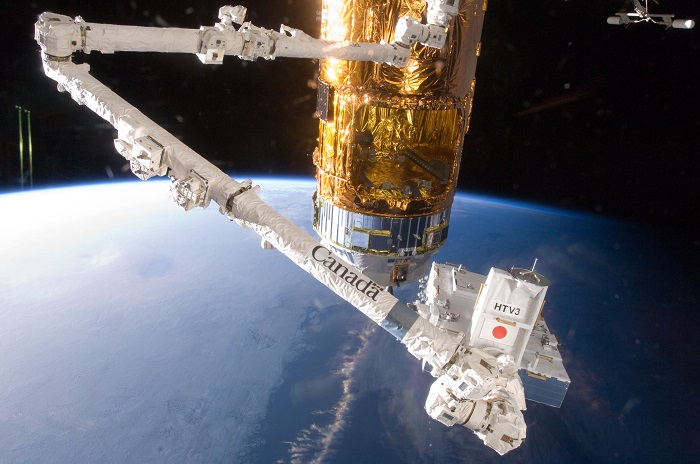
Grasped by the station’s Canadarm2, the Exposed Pallet is transferred back to the HTV-3 Kounotori resupply craft in August 2012. The versatility of the HTV has been demonstrated on three previous missions. Photo Credit: NASA
.
Almost all references to cargo-carrying white storks in recent days have revolved inevitably around the Duke and Duchess of Cambridge and the arrival of their new son. Yet this weekend (3/4 August), a white stork of a different kind will roar into orbit from the Tanegashima Space Center on Japan’s Tanegashima Island, as the fourth H-II Transfer Vehicle (HTV-4) begins a month-long voyage to supply the International Space Station. In deference to Japanese tradition of avoiding personal names for their spacecraft, the HTVs are nicknamed “Kounotori,” which is translatable to “Oriental Stork” or “White Stork.” According to the Japanese Aerospace Exploration Agency (JAXA), the name arose because—just like William and Kate—the white stork traditionally brings joy and good news and thus precisely matched the HTV’s mandate of ferrying essential supplies to the multi-national outpost.
First flown in September 2009, the HTV measures over 30 feet long and 14 feet in diameter, weighs about 21,000 pounds, and can carry 13,000 pounds of payload to the space station. Its pressurized segment can house up to eight refrigerator-sized International Standard Payload Racks (ISPRs), which are transferred in a shirt-sleeve environment by the ISS crew, whilst an unpressurized segment enables external payloads to be robotically removed and installed onto the porch-like Exposed Facility of Japan’s Kibo laboratory. Like SpaceX’s Dragon, the HTV approaches the ISS and is captured and berthed to the Harmony node by means of the Canadarm2 robotic arm.
Unlike Dragon, the Japanese craft burns up in the atmosphere at the end of each mission, although JAXA has advanced plans for a HTV-R variant, with a “return” capsule to transport around 3,200 pounds of payload back to Earth. The first flight of the HTV-R is tentatively scheduled for 2018. Since its maiden voyage, a HTV mission has flown approximately every 12-18 months, delivering a wide range of payloads and experiments to the ISS, including the Hyperspectral Imager for the Coastal Ocean (HICO) instrument, a high-tech aquarium capable of supporting several generations of fish for up to three months, a Gradient Heating Furnace, and a number of small CubeSats.
Preparations for Saturday’s launch have entered high gear at the Tanegashima Space Center in recent weeks, and the spacecraft was loaded with propellants for its maneuvering thrusters through late June and into the first week of July. On 11 July, HTV-4 was mated with its payload attach fitting, prior to encapsulation within the rocket payload fairing and transfer from the Second Spacecraft and Fairing Assembly Building (SFA2) to the Vehicle Assembly Building (VAB) for integration with its H-IIB launch vehicle. This will be the fourth mission by the H-IIB, which previously delivered HTV-1 into orbit in September 2009, followed by HTV-2 in January 2011 and HTV-3 in July 2012.
The two-stage rocket stands 185 feet tall and represents a marriage of both liquid and solid propellants. The first stage is powered by two LE-7A cryogenic oxygen/hydrogen engines and supplemented by four solid-fueled (polybutadiene) boosters. With two minutes remaining before launch, the rocket will transfer to internal power, with all liquid propellants verified at flight pressures. Liftoff from Launch Pad 2 is scheduled for 4:48 a.m. local time Sunday (3:48 p.m. EDT Saturday), with the dazzling plumes of the first-stage engines and the solids promising to turn night into day across southeast Tanegashima Island’s Pacific coastline.
The solids will burn out and separate from the vehicle at T+114 seconds, after which the payload fairing will be jettisoned two minutes later to expose HTV-4 to the near-vacuum environment of space for the first time. Meanwhile, the twin LE-7A engines will continue to power on upwards, finally shutting down at T+352 seconds and establishing the proper conditions for separation of the first stage and ignition of the H-IIB’s second stage. By now, the vehicle will have attained an altitude of about 125 miles. A single, liquid-fueled LE-5A engine will pick up the baton, firing for a little more than eight minutes to complete the delivery of HTV-4 into low-Earth orbit. By 15 minutes after launch, the gold-colored “Kounotori” will separate from the second stage and begin the checkout and deployment of its solar arrays, antennas, and other appendages.
HTV-4 will then be primed for a five-day orbital rendezvous profile, leading to a scheduled capture by Expedition 36 astronauts Chris Cassidy, Karen Nyberg, and Luca Parmitano at 9:29 a.m. EDT on 9 August. The robotic spacecraft will begin its final automated sequence, approaching to within 33 feet of the space station, from where it will be grappled by Canadarm2 and moved to a “ready-to-latch” position over the nadir (or Earth-facing) port of the Harmony node. Four latches will engage to hold HTV-4 in place, after which 16 bolts will be driven to achieve a “hard mate.”
This will begin a four-week period of operations with the Japanese craft, during which time about 11,900 pounds of payloads will be transferred. These include the newly-developed Freezer-Refrigerator of Stirling Cycle (FROST) for the pressurized Kibo module, which will cool experimental samples to below -70 degrees Celsius, even in the case of power outages. The ISS Cryogenic Experiment Storage Box (ICEBox) will keep a container cool without electrical power, whilst a Re-entry Data Recorder (known as the “i-Ball”) will measure velocities, accelerations, temperatures, and imaging data during HTV-4’s fiery re-entry. The spacecraft’s unpressurized segment will house a replacement Main Bus Switching Unit (MBSU), a Utility Transfer Assembly (UTA), and NASA’s Space Test Program-Houston4 (STP-H4). Four small CubeSats will also be aboard.
On a more basic level of necessity, clothes, dried food, snacks, and beverages for the ISS crew, including 480 liters of water, will be aboard. Additionally, the Advanced Technology On-Orbit Test Instrument for Space Environment-mini (ATOTIE-mini) will fly for the first time to evaluate changes in surface potential of the HTV before and after berthing at the space station and if this potential affects spacewalkers. The spacecraft will be loaded with trash at the end of its mission and is expected to be unberthed on 5 September and deorbited two days later.
.
Update:
.
Launch Time of H-II Transfer Vehicle "KOUNOTORI4" (HTV4) by H-IIB Launch Vehicle No. 4
Mitsubishi Heavy Industries, Ltd.
Japan Aerospace Exploration Agency (JAXA)
Mitsubishi Heavy Industries, Ltd. and the Japan Aerospace Exploration Agency (JAXA) would like to announce that we have set the launch time of the H-IIB Launch Vehicle No. 4 with the H-II Transfer Vehicle "KOUNOTORI4" (HTV4) onboard at 4:48:46 a.m. on August 4, 2013 (JST.)
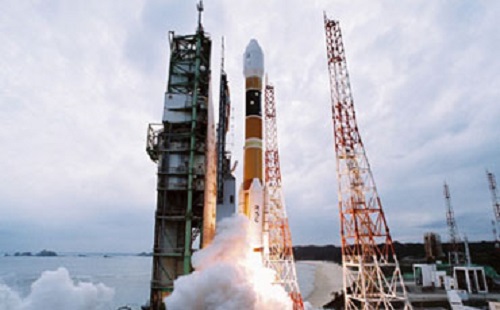
Quelle: JAXA
.
Update: 3.08.2013
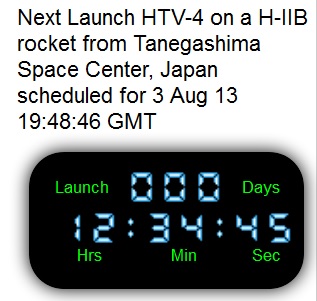
Update: 23.15 MESZ
FRAMS von HTV-4-Start von Jaxachanell
.
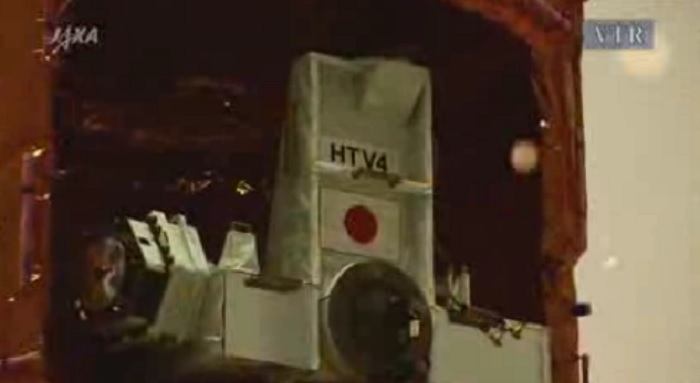
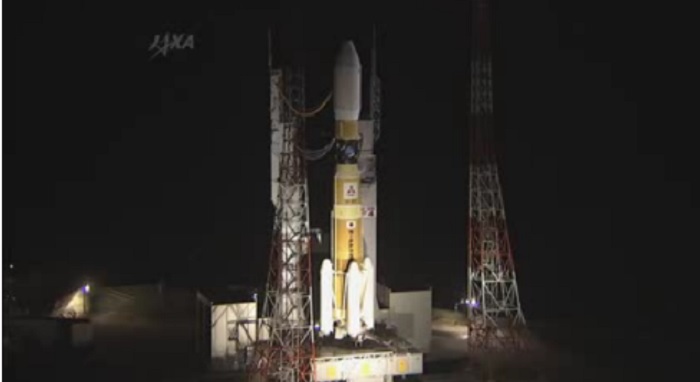
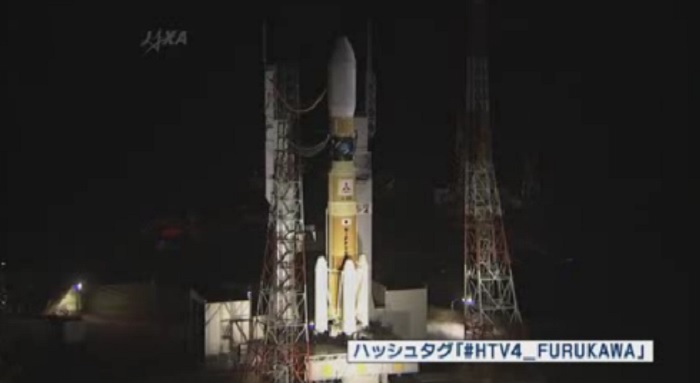
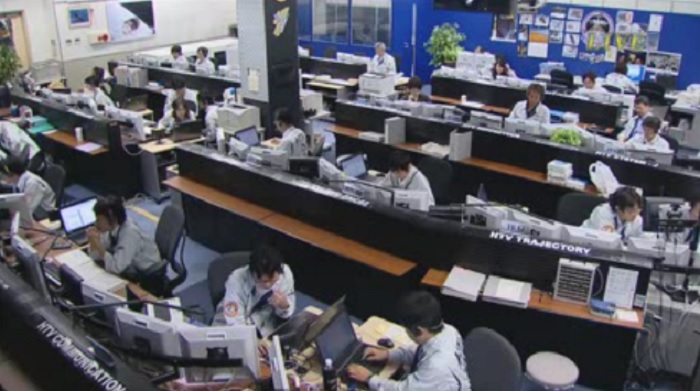
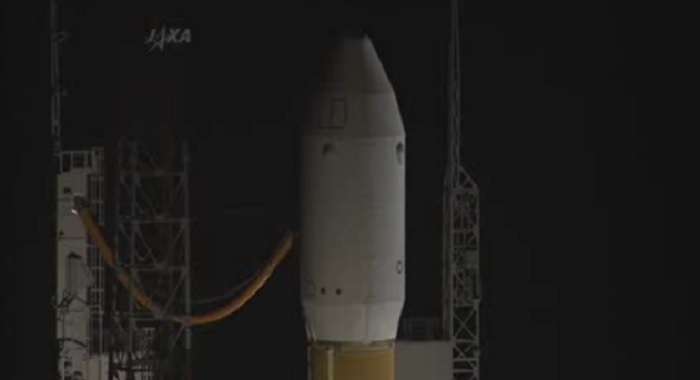
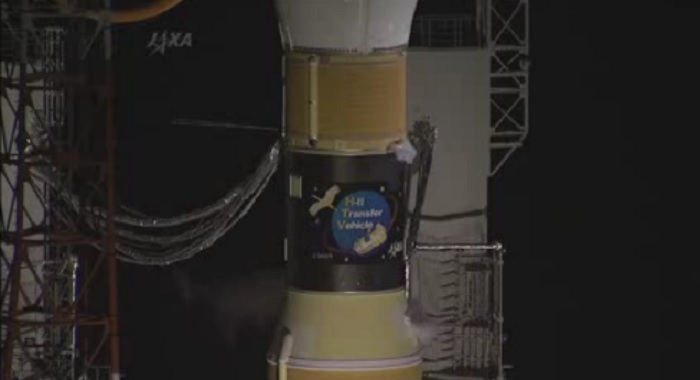
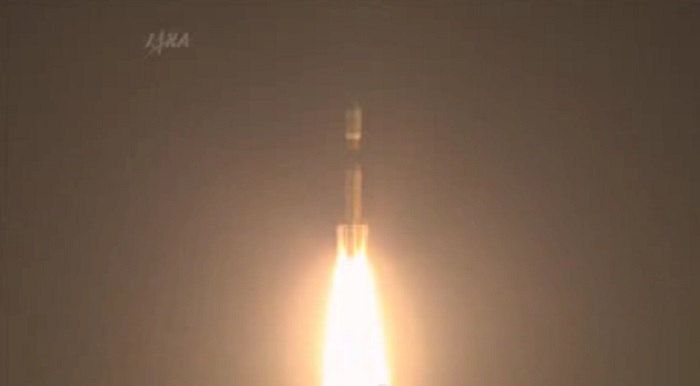
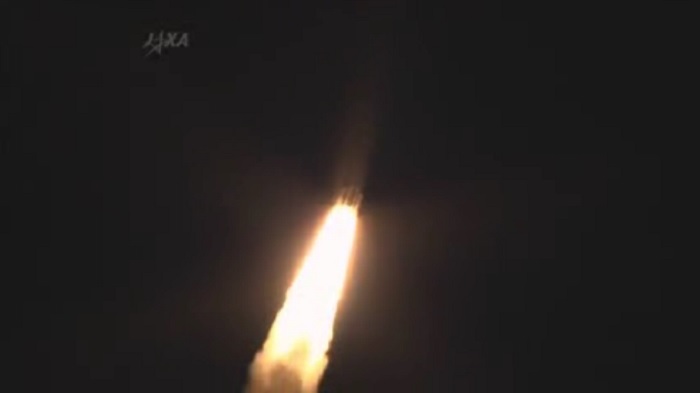
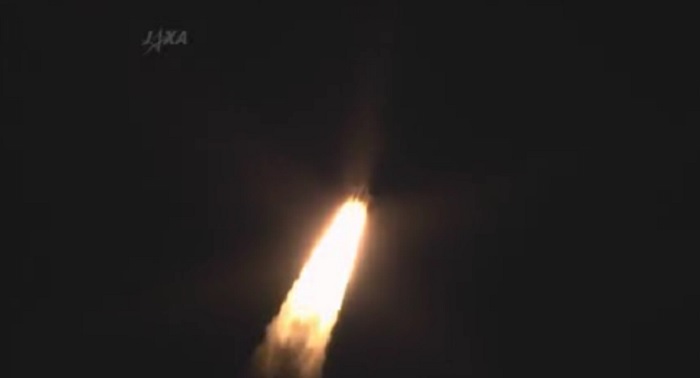
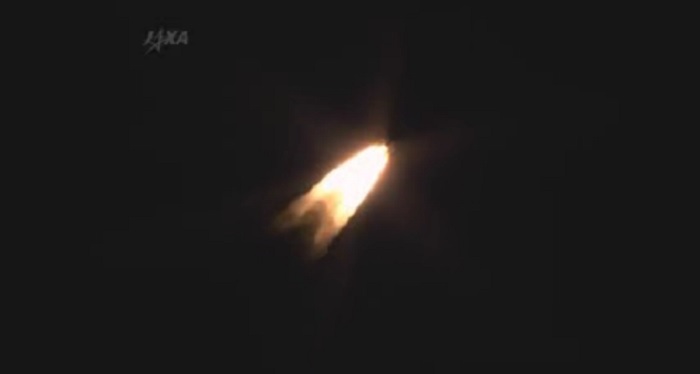
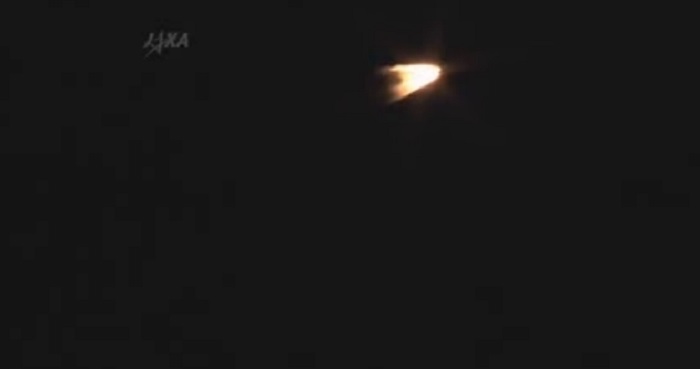
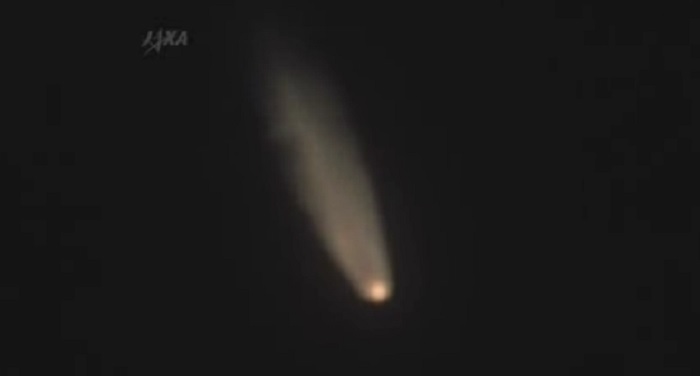
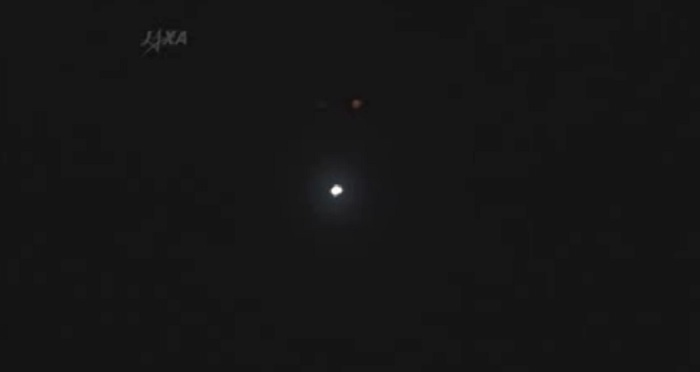
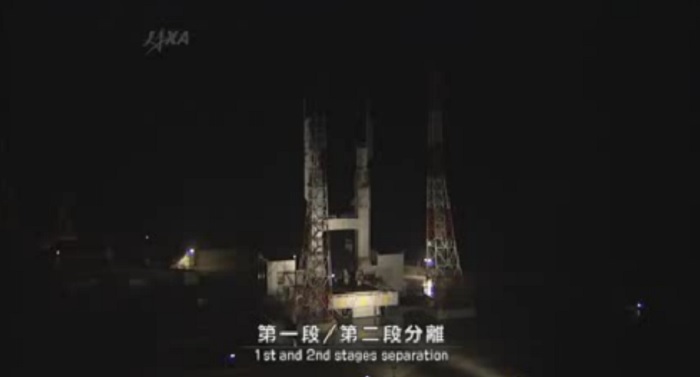
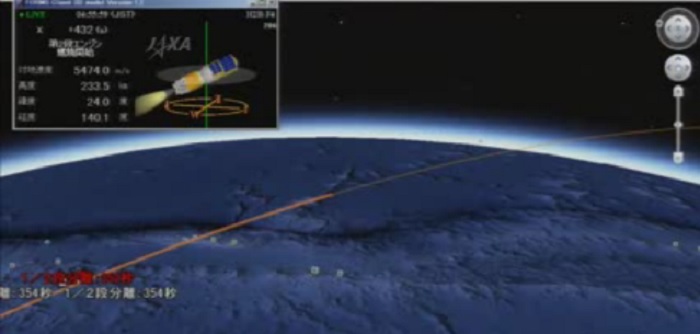
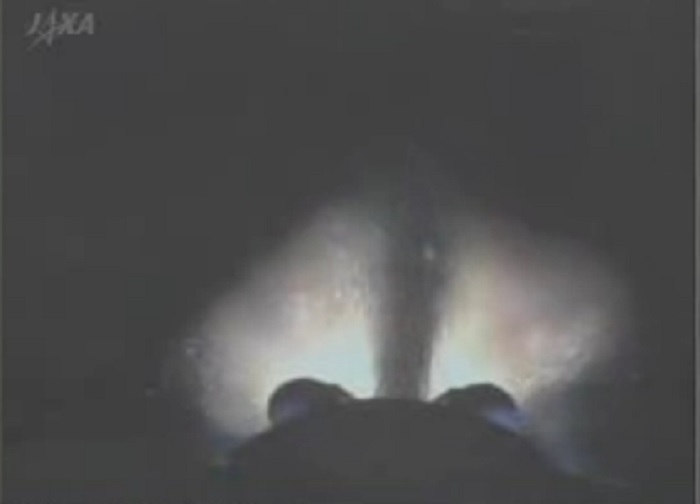
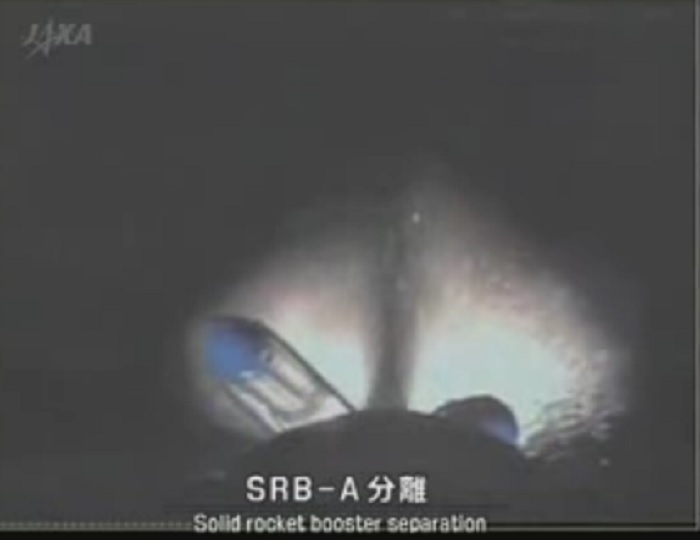
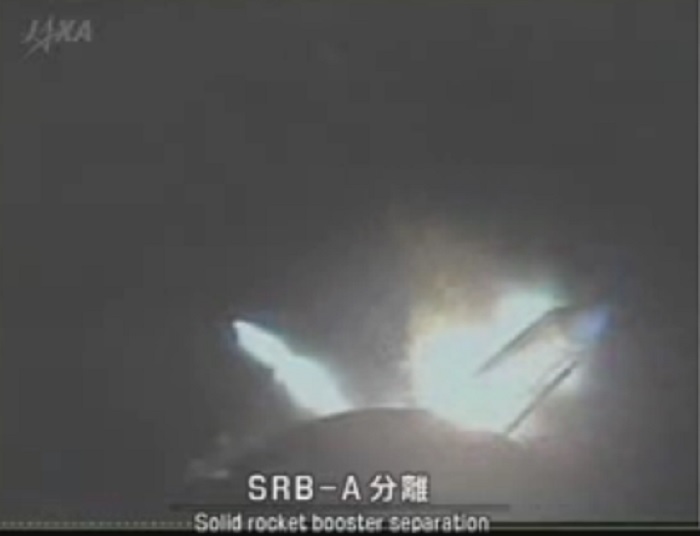
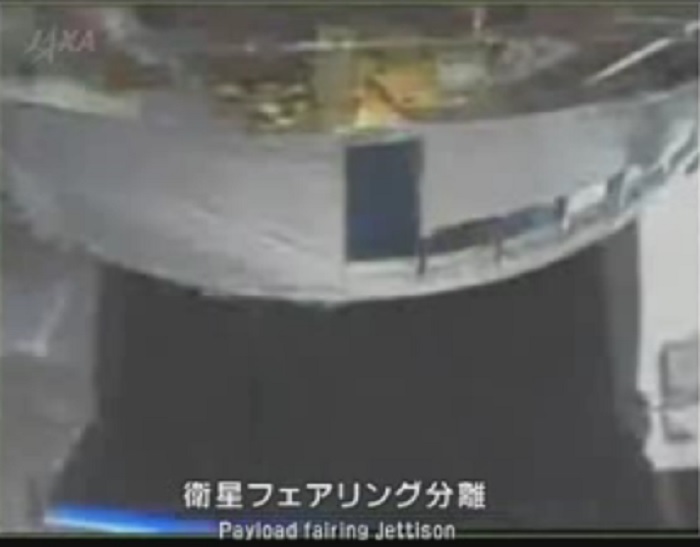

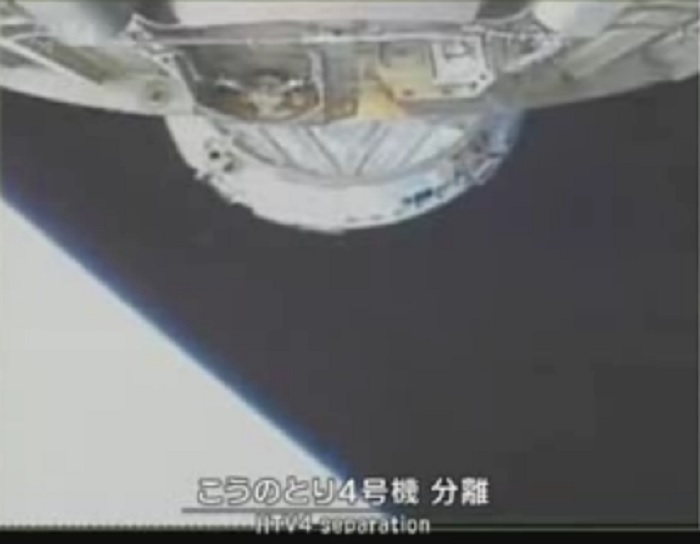
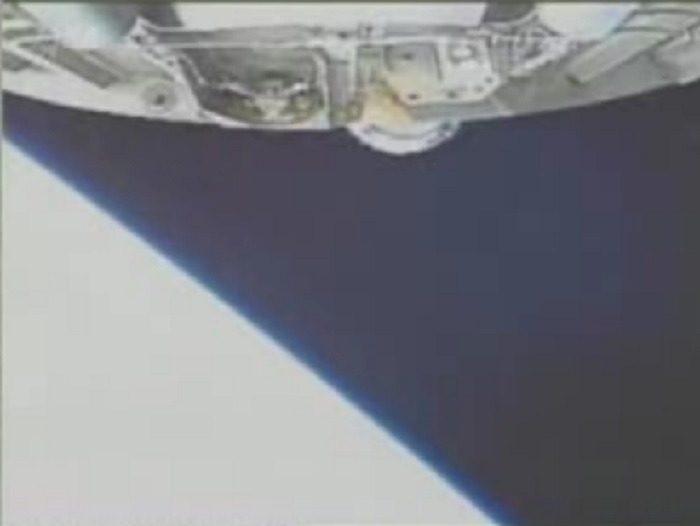
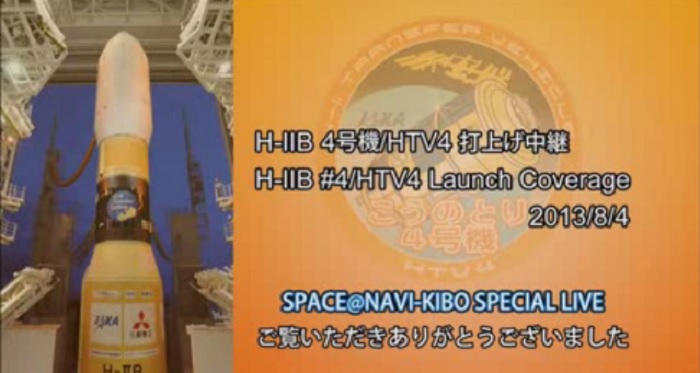
Quelle: JAXA
.
Update: 5.08.2013
.
Kirobo is world's first talking robot sent into space
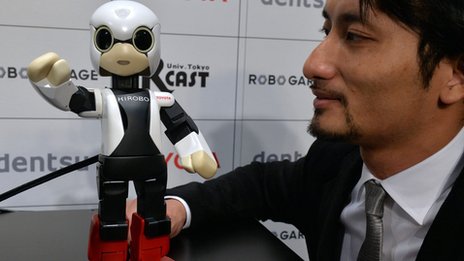
Tomotaka Takahashi with his creation 'Giant leap'
.
Japan has launched the world's first talking robot into space to serve as companion to astronaut Kochi Wakata who will begin his mission in November.
The android took off from the island of Tanegashima in an unmanned rocket also carrying supplies for crew onboard the International Space Station (ISS).
Measuring 34cm (13 inches), Kirobo is due to arrive at the ISS on 9 August.
It is part of a study to see how machines can lend emotional support to people isolated over long periods.
The launch of the H-2B rocket was broadcast online by the Japan Aerospace Exploration Agency (Jaxa).
The unmanned rocket is also carrying drinking water, food, clothing and work supplies to the six permanent crew members based at the ISS.
Kirobo's name derives from the Japanese words for "hope" and "robot".
The small android weighs about 1kg (2.2 pounds) and has a wide range of physical motion. Its design was inspired by the legendary animation character Astro Boy.
Kirobo has been programmed to communicate in Japanese and keep records of its conversations with Mr Wakata who will take over as commander of the ISS later this year.
In addition, it is expected to relay messages from the control room to the astronaut.
"Kirobo will remember Mr Wakata's face so it can recognise him when they reunite up in space," the robot's developer, Tomotaka Takahashi said.
"I wish for this robot to function as a mediator between a person and machine, or a person and the Internet, and sometimes even between people."
The biggest challenge was to make the android compatible with space, Mr Takahashi added.
Dozens of tests were carried out over nine months to ensure Kirobo's reliability.
Kirobo has a twin robot on Earth called Mirata, which will monitor any problems its electronic counterpart may experience in space.
"It's one small step for me, a giant leap for robots," Mirata said of the mission last month.
The endeavour is a joint project between Mr Takahashi, car producer Toyota and advertising company Dentsu.
Quelle: BBC

